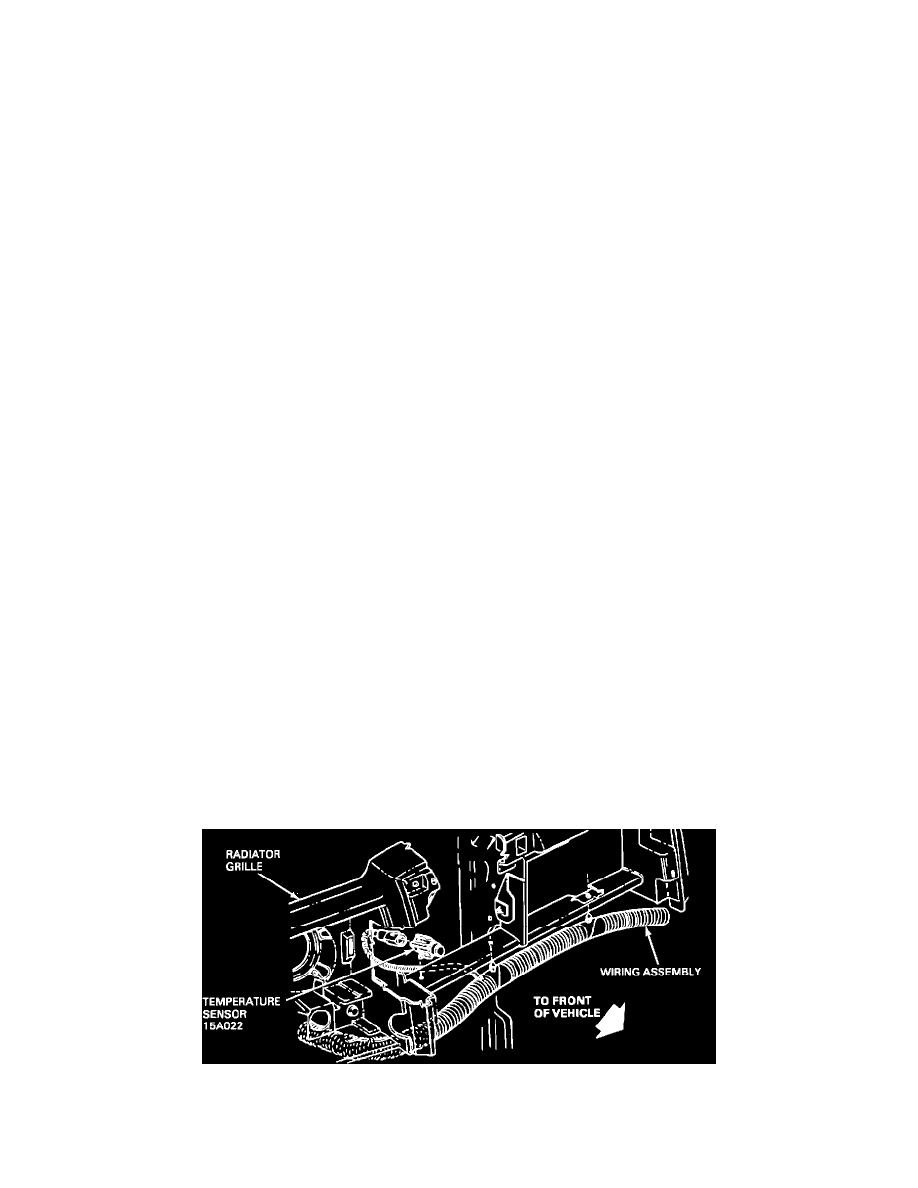Mark VII V8-302 5.0L VIN F FI (1987)

Technical Service Bulletin # 87209
Date: 871007
Compass/Thermometer - Diagnostic Procedure Revision
COMPASS AND THERMOMETER - DIAGNOSTIC
Article No.
PROCEDURE - SHOP MANUAL REVISION
87-20-9
LINCOLN-MERCURY:
1987 CONTINENTAL
1987-88 MARK VII
ISSUE:
Compass and thermometer service diagnostic procedures as outlined in the 1987 and 1988 Car Shop Manuals, Volume B, Section 33-18 have
been changed to simplify the service procedure.
ACTION:
If service is required, refer to the diagnostic procedures below and on pages 39 through 48 of this TSB.
OTHER APPLICABLE ARTICLES: None
WARRANTY STATUS: "INFORMATION ONLY"
Description and Operation
Compass Display
The compass thermometer is a fully electronic system located in the roof console. A remote ambient temperature sensor is located to the right of center
behind the radiator grille. The unit displays current vehicle direction as well as the outside temperature in degrees Celsius or Fahrenheit. The compass
and thermometer operate independently (turned on or off) by pressing the COMP or TEMP button on the console.
When the ignition is initially turned to RUN or ACC, the display turns all segments on for one second and then off for one second. The temperature or
the vehicle direction (heading) is then displayed if either was previously on. A memory in the compass thermometer remembers whether the displays
were on or off when the vehicle was last driven.
The compass determines vehicle direction, using an electronic magnetic sensor which is located within the overhead console. The vehicle direction is
electronically displayed as one of eight compass headings (N, NE, E, SE, S, SW, W or NW). The magnetic sensor produces a voltage which represents
the total magnetic field it is in contact with. This magnetic field is a combination of the earth's magnetic field and the vehicle's magnetic field. Perform
the Compass Calibration procedure outlined under Adjustments to correct an error caused by vehicle magnetism.
Factors Affecting Compass Operation
Magnetic mount devices (antennas, roof racks, etc.) should not be located on the roof of the vehicle because they affect the magnetic sensor in the
overhead console and thus cause compass inaccuracies. If these devices must be used, recalibrate the compass thermometer and perform the True North
Adjustment as outlined under Adjustments.
Various external conditions can also affect compass accuracy. Driving near power lines or objects with high iron or steel content (bridges, underground
pipes and tunnels, etc.) may temporarily change the compass heading. The display will return to the true vehicle heading after the vehicle leaves the area.
Another factor affecting compass accuracy is that in most geographic locations, magnetic north differs from the "true north" direction shown on maps.
This difference, called magnetic variation varies considerably across the country anywhere from 25 degrees to the east to 30 degrees to the west. The
overhead compass must be adjusted to compensate for this misalignment in order to maintain compass accuracy. Correct any magnetic variation on the
overhead compass by performing the True North Adjustment as outlined under Adjustments.
Outside temperature is displayed from -40~C to 60~C (-40~F to 140~F). The display can be changed to either degrees Fahrenheit or degrees Celsius by
depressing the MILES/KM button on the message center. If the outside temperature nears freezing, 3~C (38~F) or lower, an ICE alert warning flashes
alternately with the temperature for one minute to warn the driver of potential road icing conditions. The alert flashes after vehicle start-up or when the
alert conditions are first met while driving. The alert will not flash again until the vehicle is restarted.
